Now Reading: In Conversation with Sri Taruvu Suresh, Joint Director, Andhra Pradesh Forensic Science Laboratory
-
01
In Conversation with Sri Taruvu Suresh, Joint Director, Andhra Pradesh Forensic Science Laboratory
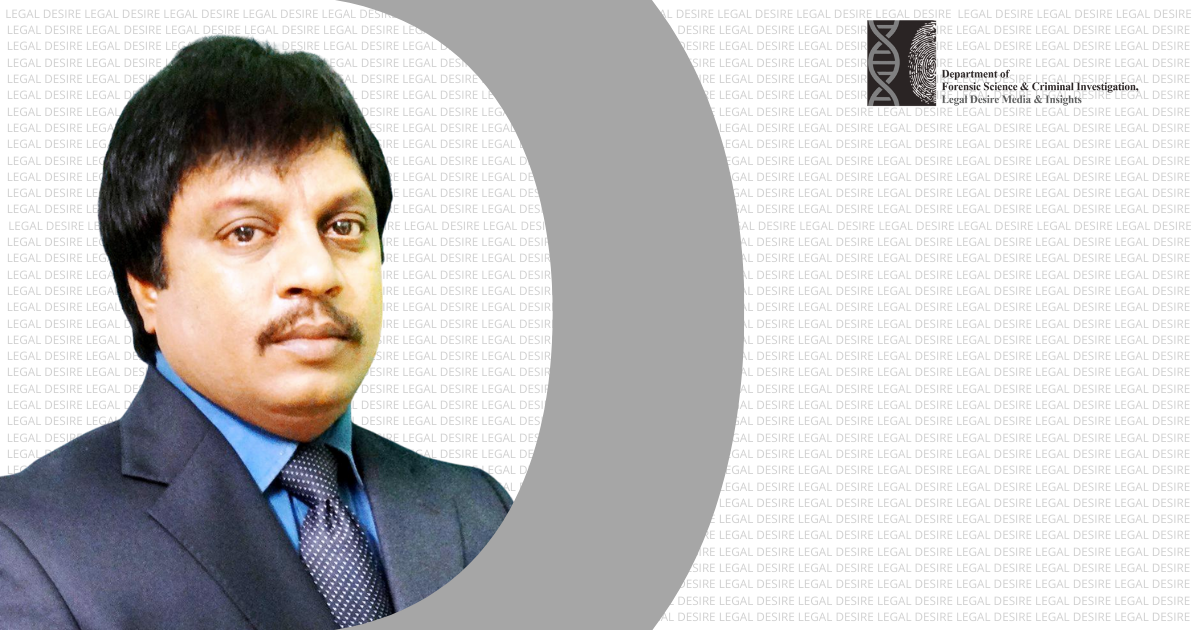
In Conversation with Sri Taruvu Suresh, Joint Director, Andhra Pradesh Forensic Science Laboratory
Sri Taruvu Suresh is working as the Joint Director in Andra Pradesh Forensic Science Laboratory. He joined Forensic Science Laboratory in 1993 as a Scientific Assistant. He is an M.Sc (Chemistry) Gold Medalist from S V University, Tirupati, M.Sc (Psychology) from Madras University, M.Ed from Annamalai University, PGDCA from Hyderabad and PGDFDR from Nalsar Law University. Sri Taruvu Suresh served as a First Officer In charge for newly created CLUES Team in Police department on 4 July 1998 in CCS, Hyderabad City Police, he also holds State In-charge post for all 26 clues teams in combined Andhra Pradesh. He has attended more than 8600 crime scenes of different nature not only in Telugu states but also different States of India. He has testified over three thousand times in both criminal and civil cases. Sri Taruvu Suresh is the recipient of Six National Awards for his outstanding performance in collection of Physical Evidences, Reconstruction of Crime Scenes and correlated the bomber signatures in different explosion cases. He has received several hundred other Good Service Entries, Meritorious Service Entries, Cash rewards, Commendation Letters, Appreciations for his excellent services in detecting and defusing the unexploded bombs one at Mahalaxmi Jewellers, SIT office, Nellore, Chaderghat and he saved 500 Namazies by diffusing a live bomb in Macca Masjid bomb explosion. He has written 108 articles on Forensic Science in SURAKSHA a Telugu reputed Journal in Telangana and AP about Forensic Science with the title “Nerasthala Parishodhanalo Bhowthika Saakshadhaarala Sekarana Mariyu Ravaana”. He Has 8 Research Publications in National and International Journals about chemistry and psychology topics. He has been trained in Lie Detection at CBI, New Delhi and declared as an expert. He has also been trained at ERDL (Pune), NSG (Manesar), BPR&D on IED’s and Landmine Explosives and attended many Professional Courses, Workshops and Seminars. He worked as a Faculty member in RBVRR Telangana State Police Academy from 2011-2019.
What inspired you to join the Forensic domain during those early days? How do you feel about your decision to join the domain now?
In my college days I had a keen interest in reading detective novels and stories. In those novels how the hero was solving the crimes with different clues was an inspiration for me to join the Forensics Domain. Forensic science domain is a good career path for those who are interested in science and problem-solving. The role is never repetitive or boring. As a forensic scientist, I can help the victims to receive justice through science and also help capture dangerous criminals who commit heinous crimes.
Having served as First Officer in-charge for newly created CLUES Team in Police Department, Hyderabad. What challenges were encountered by you in this position in the initial stages?
I faced too many challenges in the initial stage. In many cases I risked my life. As a Crime Scene officer, my primary duty was to collect Physical Evidence from the scene of crime. In many cases, I faced challenges with hazardous chemicals, body fluids and in some cases live bombs (secondary devices), difficulties in identifying Arson Signatures, Bomber Signatures, blood splatter analysis etc. Because of the trainings at Explosives Research & Development Laboratory [ERDL], Pune [now known as High Energy Materials Research Laboratory (HEMRL)], BPR&D, New Delhi and at National Security Guard [NSG], Manesar about bomb diffusion techniques, analysis of explosive residue analysis etc. I risked my life too many times in diffusing the bombs encountered at the scene of crime. But it is not advisable in present scenario.
Some instances where I faced challenges at the crime scenes are: On 06-04-2000 ISI persons killed the owner of Mahalakshmi jewelers in Hyderabad City police using pistol in the shop and culprits left one pipe bomb in plastic cover with clock delay mechanism in the scene. Luckily, it was identified and diffused at the scene and the time left in that clock of bomb was only 4 minutes.


On 14-03 2005, I diffused four pipe bombs that were recovered from the SOC on the railway track near Rajupalem PS limit Kodavalur mandal of Nellore district of AP.

In one ISI case, on 31-12-2005 night one typical 5 KG IED with activated Cell phone attachment was diffused by me with great difficulty by putting my life in risk and taken out the SIM card from Cell Phone and given call details to SIT officers (IO’s) and sent the same to APFSL for recovering deleted messages and for CDR analysis. Based on the details many ISI persons were taken into custody.

On 01-01-2006, 10 KG IED kept in a travel bag similar to Mumbai blast IED’s was diffused. Given similarities and technical details to Mumbai ATS Chief in Mumbai serial blasts. IED Slurry was an explosive with Aluminium powder, bunch of Electric detonators with leads with 9 volts flat battery and on/off switch was kept in the travel bag.


On 18-05-2007, an explosion took place in Macca Masjid a historical mask in Hyderabad city during namaz at about 1.20pm and 9 namazies died on the spot and many were injured due to the explosion effect. Another live bomb was detected at the same scene of offence which was diffused by me along with two other CSW officers with high life risk. For this Exemplary Courage and Devotion in Diffusion of Unexploded RDX-TNT Electric Circuit Bomb Connected with Cell Phone Triggering Mechanism and saving 500 Namazis in Mecca Masjid, I received “Best Officer of The Hyderabad City Police 2007” award and a Cash Reward was also received from Sri Bal Veender Sing, IPS, Commissioner, Hyderabad City Police. Also received National award from Directorate of Forensic Science, Ministry of Home Affairs, New delhi in All India Forensic Science Conference on 17 Nov 2009 Held At Jaipur,Rajastan.

In Mumbai serial Train blast cases as per the instructions of DGP AP, Hyderabad, a team consisting of Explosive experts Mr.U.Ramamohan, Mr.T.Suresh and Mr.A.Nareshbabu visited the crime scene from 13th to 15th July 2006 at Mumbai related to 11/7 Serial bomb blasts. With the forensic clues and reconstruction, we gave clues to ATS. This team got an opportunity to work along with my friend, great son of India encounter specialist Sri Vijay Salsker in this case.
What challenges were encountered by you at the Crime Scenes?
Usually at any crime scene, the greatest challenges we faced are protection of crime scene, physical evidence contamination and loss of chain of custody. Due to lack of knowledge about protection of scene of offence, the victims, inmates, curious onlookers, media and careless handling of the crime scene by some IO’s leads to contamination and tampering of the vital evidence. Other biggest challenge is the collection of trace evidences in a way not to modify their character or nature or not losing them. In crime scene involving dead bodies first you have to decide whether the crime scene is primary or secondary is also a challenge. Going from call to call and in many cases not able to devote the time needed to properly and completely to process a crime scene. Packing material shortage problems, sometimes failing to safeguard transient evidences and other evidences present at the crime scene etc, are the major challenges.
You have attended more than 8600 crime scenes of different nature in different states of India. What difference do you find compared to working in the laboratory setting?
The ultimate objective as a crime scene investigator or as a Joint Director in the Lab is aligned: to help enact justice by gathering and analyzing evidence, then presenting that evidence in court in order to uncover the truth. The Scene of crime is tasked with examining the Scene of offence, reconstruction and gathering physical evidence relevant to the investigation. In the Forensic Laboratory, we analyse various physical evidence using various scientific methods like chemical analysis and instrumental analysis. Each of these crime scene or lab profession plays an integral role in the flow of an investigation in the criminal justice system.
Has getting exposed to a large no. of crimes scenes affected your personal life? What are some tips to balance the personal & professional life?
I have faced too many problems in family life. I did not attend many important events/ ceremonies/festivals. Many a times, not spent holidays with family members. In my work place, the photographers, videographers, fingerprint experts and dog squads work in the shift system but I’m the only one person working round the clock with all teams 24/7 from 1998 to 2011 because I was the only person posted in that position. Later after few years, I learned how to balance the work-life which provided me some time to spend with family and to write forensic articles. Without attention paid to creating a balance between work and personal life, we can face so many problems like Sleep disruptions, more mistakes in the crime scene investigation, physical evidence damage, medical and mental health disorders, difficulty in maintaining positive relationships at work and at home. But I am content in solving sensational crimes and in serving the common man.
A total of 108 articles were written & published by you on Forensic Sciences in SURAKSHA, a Telegu reputed journal in Telangana & Andhra Pradesh. In spite of the large no. of crime scene visits & case workloads how did you make it possible?
In those days, in newspapers every day media wrote about the CLUES team visit to the crime scenes and success stories. By seeing these news, the editor of Suraksha advised me to write some articles about Forensic Science. Then I started to write FSL section wise handling, lifting, packing and forwarding of physical evidences with my case studies examples. I wrote about all FSL sections in 108 articles in 108 months. Every day I planned to read forensic science for two hours, and I am continuing to doing the same. Forensic Crime Scene Investigation is my passion, I love this profession. I wrote about 24 different books on forensic science which are useful for trainee IPS officers, DSP’s, CI’s, SI’s, Students, Law enforcement agencies, Law professionals etc.
Working at the crime scenes, there might have been various instances where you might have dealt with the media. How did you deal with them? What are some of the things to be considered while interacting with the media?
We don’t reveal anything to media. If the Investigating Officer insists to talk about any scientific facts about the case, then only, we will talk about the incident. We crime scene officers just guide and assist the Investigating Officer in identification, collection, preservation and packing of physical evidence. We don’t entertain any media with out the instructions of the IO.
In more than 3000 criminal & civil cases, you had been called to the court for testifying about a particular case. What challenges did you encounter while testifying in the cases? What advice would you like to give to the young person’s for testifying in the courtroom trials?
Usually in all cases I will keep a file of crime scene photos and other supporting files and requisitions or documents. In digital photographs it contains time and date which is more useful in witness box. I would like to give advice to the young person’s for testifying in the courtroom trials, before you testify, crime number, police station ,date, called by whom, when you reached, team members visited should be remember and try to picture the scene, the objects, the distances and exactly what happened. A neat appearance and proper dress in court is also very important. Present your testimony clearly, slowly, and loud enough. When you are called into court for any reason, be serious, avoid laughing, and avoid saying anything about the case until you are actually on the witness stand. Keep your temper. Always be courteous, do not give an answer without thinking. Explain your answer if necessary.
What changes have you observed in the crime scene investigations from older days till the present day?
Technology has advanced significantly to track, catch, and prove criminals committing crimes. Technologies or tools such as latest gadgets for searching, identification, recording the Scene of offences, Spot test kits, Cyber forensic tools for retrieving any type of data, Audio-Video authentication, Image analysis, cell-phones, GPS tracking, computers, facial recognition systems, Latest DNA analysis equipment, Bal scan etc, are available in the process of modernday criminal investigation.
In your opinion, what approaches are required to ensure there is no backlog of cases in the Forensic Laboratory and to clear any existing backlog of cases?
As a result of bifurcation from combined Andhra Pradesh in APFSL testing specimens of all sections and RFSL’s reached a bottleneck. We are fully aware of the significant and severe impact that the backlog and delays have caused. This was due to shortage of the staff. But with the great efforts and vision of our DGP and the Director, Andhra Pradesh taking more interest to develop APFSL in strengthening and developing the Forensic Lab. We recruited 52 new scientific assistants and got permission from the AP government to recruit some more contract posts in different cadres. However, we remain confident in our intervention measures that are aimed at regaining public confidence and equally trying to restoring APFSL organisational reputation and image.
What challenges are faced by the Mobile Forensic Lab & Vans (MFSL) in crime scene investigation?
At present in Andhra Pradesh has 109 Crime Spots mobile teams are functioning with latest scientific gadgets and trained police personals. These teams are functioning in the control of SDPO. I’m acting as Technical In-charge for these Teams for Training and clarifying the doubts of Investigating Officers and the team members. The main challenges are these trained personnel are not dedicatedly allotted to work in the teams. They are attending all types of station duties and if they transferred or promoted there is no alternative person in their place. All team member needs lot of forensic knowledge in crime scene reconstruction, handling, lifting and packing of physical evidence techniques and skills. For that our DGP sir is taking adequate steps for training and strengthening the CLUES Teams to serve the common man.
Various high-profile cases have been handled by you over the course of time of your service. What kind of pressure is involved in such cases & how did you deal with it?
In all crime scenes, Forensic personnel must pay close attention in the collection, preservation, packing and analysis of physical evidence. If evidence is mishandled, manipulated, or misinterpreted it can potentially destroy a case and/or the lives of all individuals involved. For this I planned to use checklists in all types of cases and I always maintain the photo logs, physical evidence logs and most importantly chain of custody. Many cases have been tainted due to unethical behaviour. As the team in-charge, I always maintain good moral and ethical character. In my opinion, if a crime scene investigator fails to abide by the set of policies and procedures they are not only acting unethically, but they are also putting the case at risk. It is important to ensure that crime scene personnel are competent in regards to the duties and responsibilities in dealing with the crime scenes.
Kindly describe in brief a case handled by you, which is very close to your heart? (Excluding any personal identifiable information)
On 21st February 2013, two bomb blasts occurred in Dilsukhnagar area in Hyderabad City killing 16 persons and injuring about 117 others. The twin blasts were triggered by improvised explosive devices (IED) tied to two bicycles. Different methods of Post Blast Investigation approaches, my own experiences in addition to the regular traditional search patterns and processes, traditional search patterns coupled with scientific approaches and reconstructions which resulted in easy identification of the Bomber Signature that leads to conviction. Scientific methods and new approaches were adopted in Dilsukhnagar twin blast case with these techniques identified similarities in physical evidences, triggering mechanism and bombers signature of German Bakery blast case of Pune.
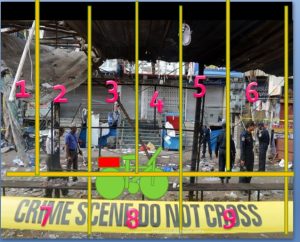

In Pune bomb blast case, the culprit was already identified with the help of physical evidence collected from the scene. In CCTV footage, the culprit was identified with that bag containing pieces of evidence. NIA chief and DGP appreciated my efforts. In this case I worked continuously for four days at the Scene of Offence.
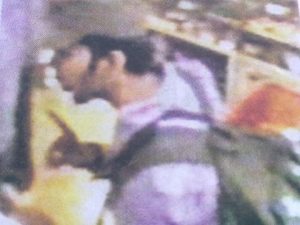
For your exemplary contribution to the Forensics domain, you might have received various awards, recognition & appreciation. What are some of the notable ones?
First National Award
Meritorious Award Received from DFS, Ministry of Home Affairs, New Delhi in 2006 At Gujarat From Gujarat Home Minister Shri Amit Shah for Meritorious Services in Crime Scene Investigation in recognition of outstanding contributions made in the field of “Crime Scene Management and Forensic Science Support to Investigating Officers” and for attending more than 6000 crime scenes and the clues collected in solving the Bomb Blast case of “Attack on Ex. CM Shri N.Chandra Babu Naidu with Claymore Mines” at Alpiri, at Tirumala ghat road.
2nd National Award
Received from DFS, Ministry of Home Affairs, New Delhi at All India Forensic Science Conference-2007 held at Kolkata for Best Paper in Crime Scene Management for identifying the bomber signature with Physical Evidence collected in “Human Bomb attack on Task Force Office Blast” Case.
3rd National Award
Received from DFS, Ministry of Home Affairs, New Delhi in All India Forensic Science Conference-2008 held at Gujarat from Shri Ashok Bhai, Speaker, Gujarat for Best Paper in Crime Scene Management “A Comparison study of Twin blast case (Lumbini Gokhul chat) with Macca Masjid Blast Case” and for Diffusion of live bomb found in Macca Masjid in saving of huge mass of Namazies.
4th National Award
Received from DFS, Ministry of Home Affairs, New Delhi in All India Forensic Science Conference-17 Nov 2009 held at Jaipur, Rajasthan for Best Paper In Crime Scene Management for recognizing the bomb planter with my clues collected in SOC in Pune Germany Bakery Blast case. Cash Reward from CP, Hyderabad “Best Officer of the Hyderabad City Police 2007” And cash reward From Shri Bal Veender Sing, IPS, Commissioner, Hyderabad City Police for Exemplary Courage and Devotion in Diffusion of Unexploded RDX-TNT Electric Circuit Bomb connected with cell phone triggering mechanism and saving 500 Namazis in Mecca Masjid.
5th National Award
Received From DFS, Ministry of Home Affairs, New Delhi in All India Forensic Science Conference-31 Dec 2010 held at Aurangabad, Maharashtra for Best Paper in Crime Scene Management in “Chief Minister Shri Y S Raja Sekar Reddy Chopper Crash case”.
6th National Award (Union Home Minister’s Medal)
“Union Home Minister’s Medal for Excellence in Police Training “For best Indore Faculty, A P Police Academy -24 Nov 2018 from the Honourable Governor of AP Shri Narisimhan in AP DGP office.
Having worked for more than 2 decades in the Forensics Domain, do you still wish to contribute to this domain? How?
Yes, I want to encourage the forensic community and police in Andhra Pradesh, to upgrade their all-round knowledge and skills in the best possible manner in Crime Scene Investigation. And also wish to strengthen the fields like – Preventive Forensics, Tele-Forensics, Crime Scene Management and Forensic Intelligence. I want to conduct Forensic Science awareness programs in all State Police training institutes, judicial academies, Police, Prosecutors, Forensic students and Medico-Legal experts. And also implement the concept of sending Forensic experts to major crime scenes for crime scene reconstruction and evidence collection. It is observed after the interaction with IO’s we noticed that at the SOC the non-forensic experts i.e. police constables are collecting physical evidence in place of forensic experts. Due to lack of forensic knowledge, they are collecting less than 50% of the forensic evidence from the scene of offence. To overcome this problem there is a need of forensic expert services in major crime scene investigations.
——————————————————————————————————————–
The interview was first published in Forensic Reporter, Legal Desire October Issue 2021. The images published above was shared by the interviewee and IP rights of images belong to him.







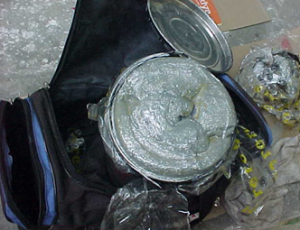


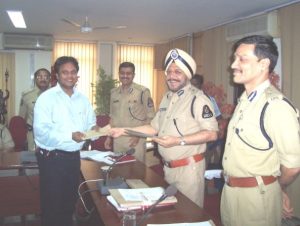


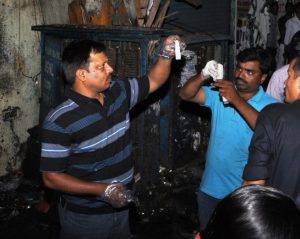
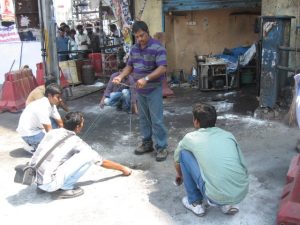
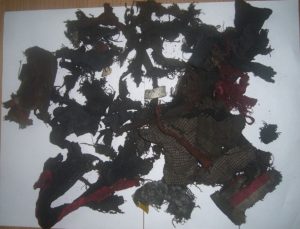





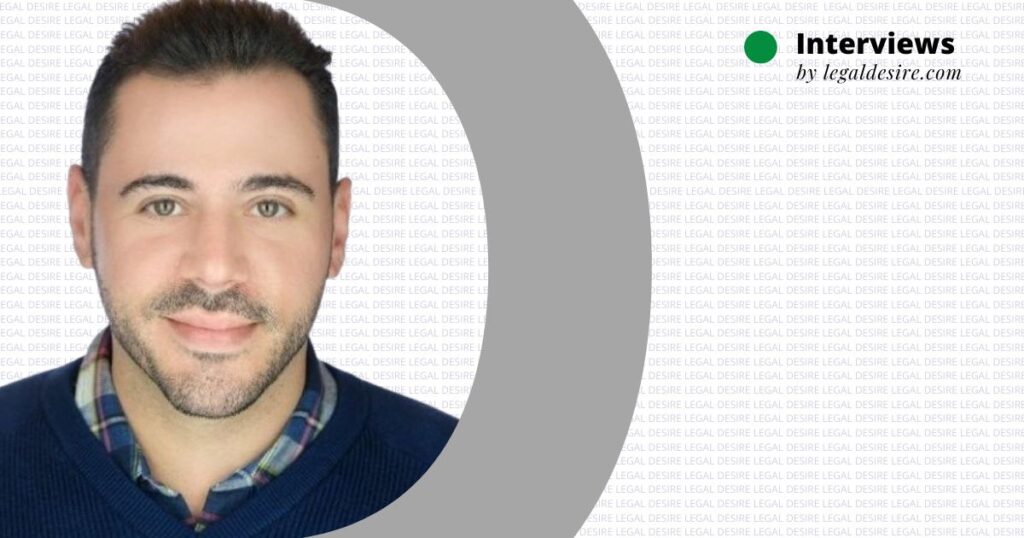








Dileep Kumar David
6 National awards good work sir ….May I God bless you sir